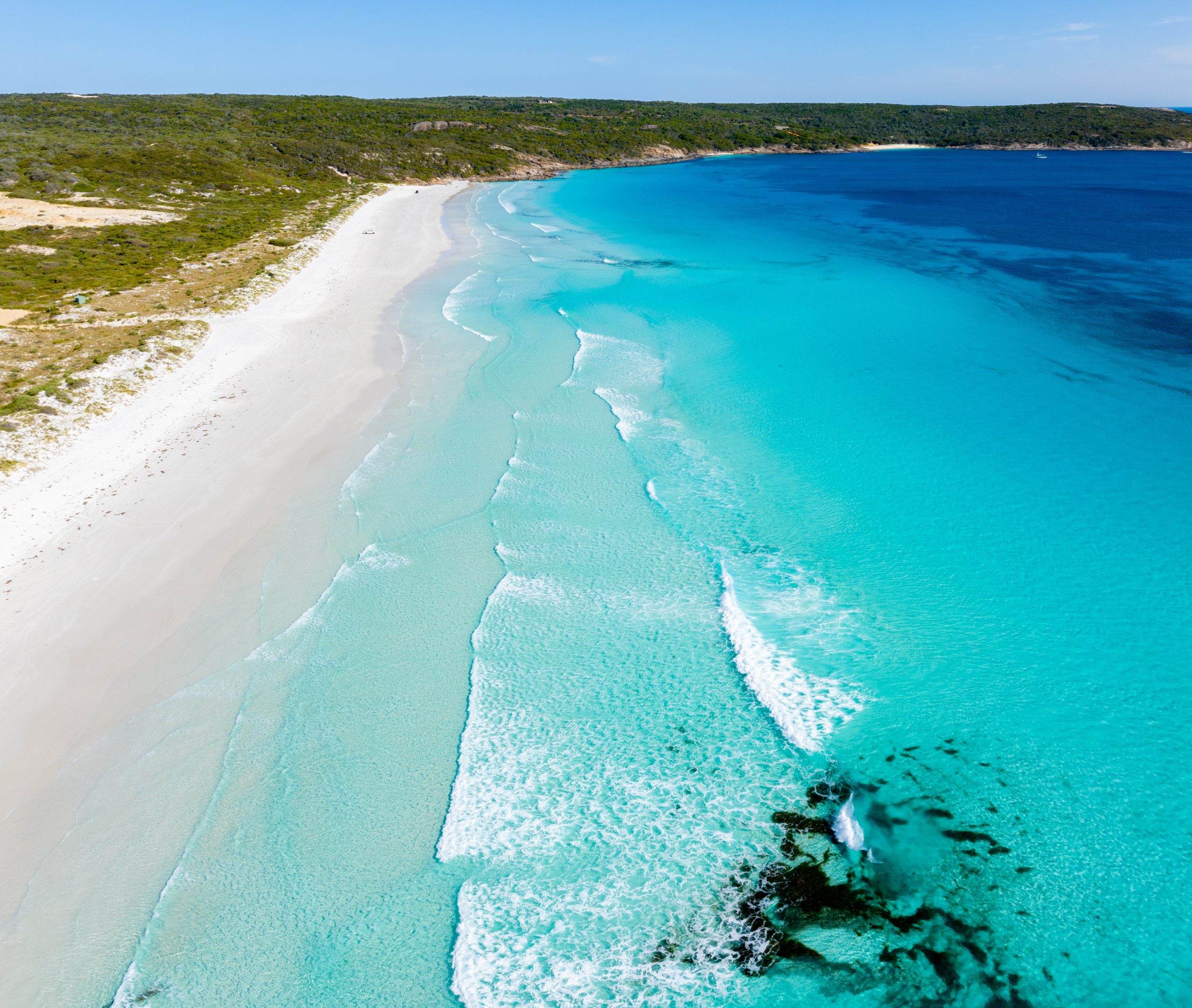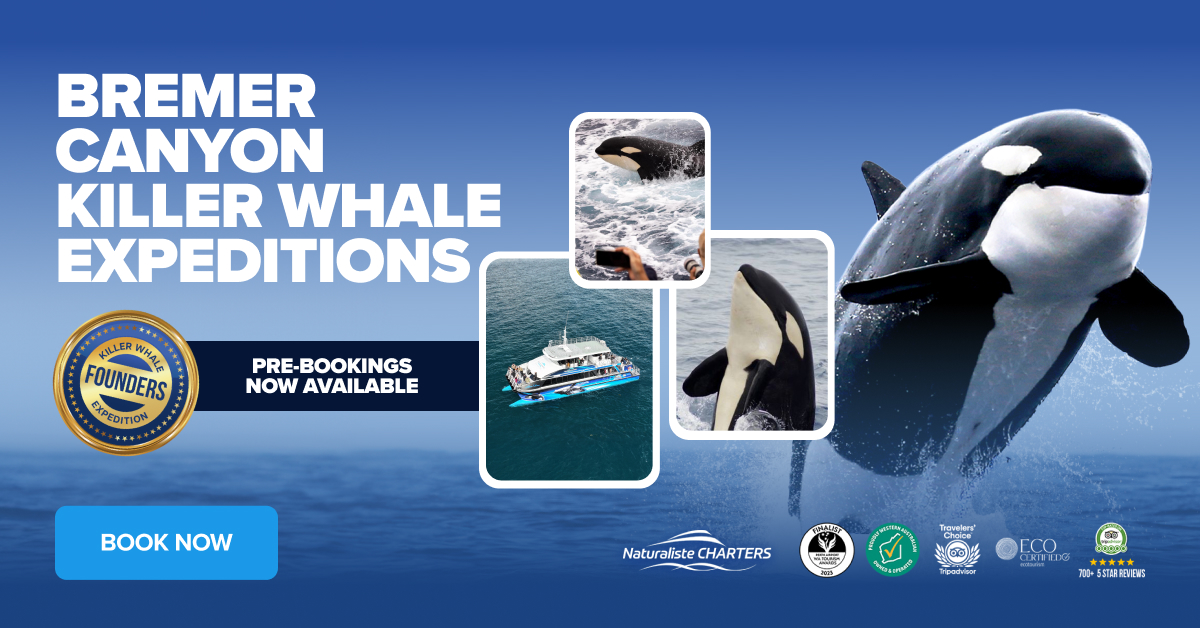A Rare Orca – Blue Whale Predation in Bremer Canyon
Warning: Graphic content
Date: 07.04.25
Subject: A Rare Orca – Blue Whale Predation
Written by: Marine Biologist, Jennah Tucker
Photography by: Annika Dahlberg, Allan Cronin and Machi Yoshida
Here, we share our incredible up close experience with an orca and blue whale predation in Bremer Canyon today. Our team and guests aboard Alison Maree witnessed one of the rarest and most powerful displays of nature in the Bremer Canyon. It was a day that showcased the raw force of the ocean’s top predators and delivered an unforgettable lesson in the reality of life — and death — in the wild.
A Dramatic Start: Storms and Cetaceans
The day began under a brooding post-storm sky, with altostratus clouds casting a dramatic backdrop over the Southern Ocean. As we left the harbour and made our way toward the shelf edge, the mood was set for an encounter of epic proportions.
Early activity came in the form of a scattered pod of pilot whales, moving steadily across our bow. Not long after, we encountered the diagonal blow of a sperm whale, unmistakable due to its left-offset blowhole — an adaptation for its massive spermaceti organ. Sperm whales are known for their incredible diving capabilities, reaching depths over 2000 metres for up to two hours as they forage for deep-sea prey like giant squid.
Soon, more blows were seen — we were surrounded by sperm whales, logging and resting at the surface between dives. While a thrilling sight, it was not the apex predator we were here to find.
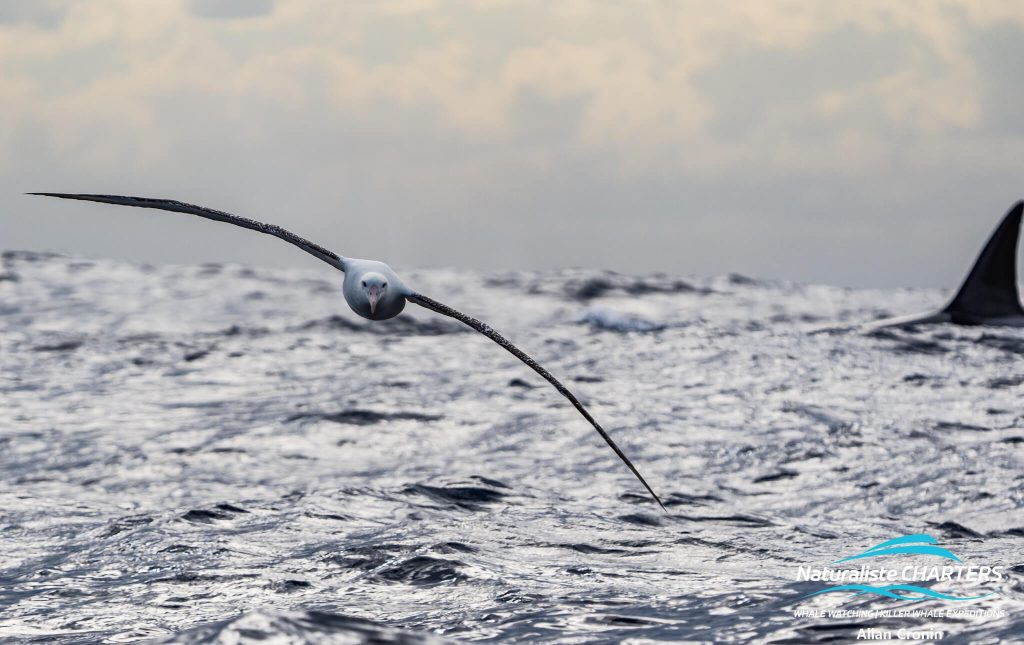
Enter the Apex Predator: Sperm Whale and Orca Tussle
Hope surged when the familiar dorsal fin of Nibbles appeared ahead, followed closely by Akama and her young calf, Wren. Their playful passes around the boat were soon replaced by a more focused energy. Another sperm whale was sighted, and to our astonishment, the orcas began to shadow the whale, staying just 150–200 metres away — a clear display of investigative behaviour.
While orca predation on sperm whales is extremely rare and not documented in this region, harassment behaviour is observed, where orcas may attempt to steal prey like squid from surfacing sperm whales. For nearly an hour, we watched the orcas pursue the sperm whale, which would dive and resurface, keeping its distance in a seemingly strategic game of avoidance.
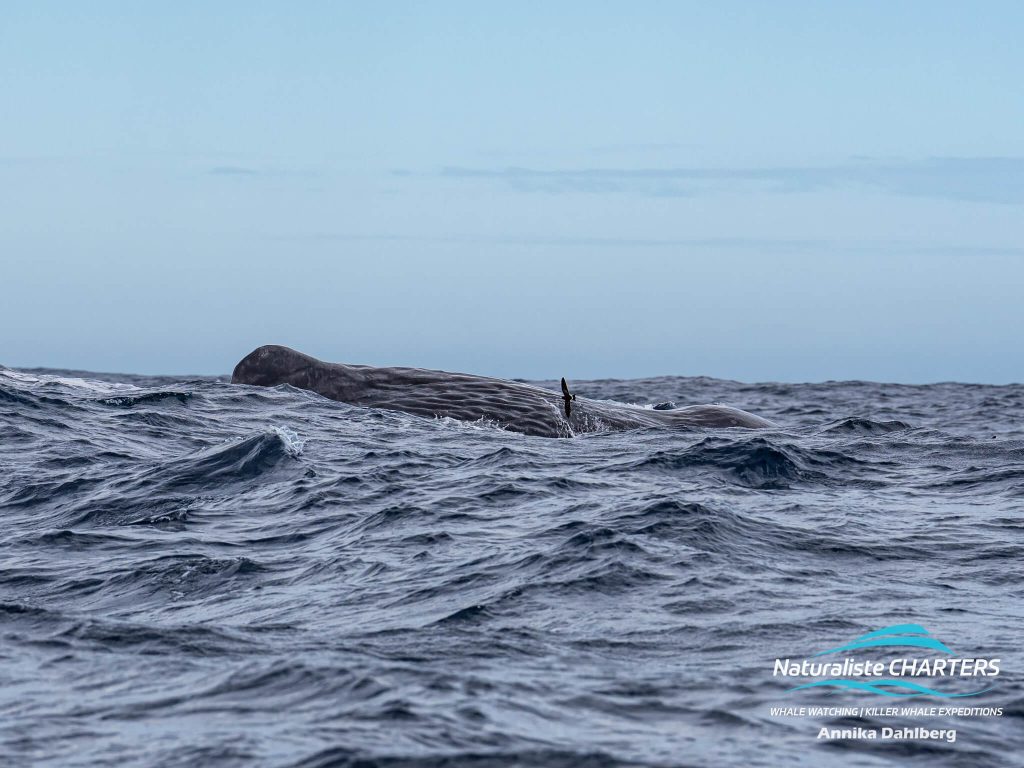
Fight for Life – Blue Whale Predation
Without warning, the pod we were with surged northwest, a coordinated high-speed movement across the surface. Nibbles raced in our wake, launching from the water with powerful, porpoising breaths. Suddenly, in the middle of a swirling sea of orcas, we saw it — a pale blue body, flat and immense, just beneath the surface.
It was a blue whale, likely a subadult pygmy blue (15–18 metres long), completely surrounded by approximately 30 orcas, later estimated to be part of at least five distinct groups, including Split Tip, Razor, Tatty, Alki and Fanscar’s pods. Initial analysis of over 3,000 images from the day suggests that even more individuals may be identified in the coming days.
The orca predation was already in progress. The whale, visibly exhausted, was letting out explosive, heaving blows and trailing oil across the surface — evidence of internal trauma. Its flukes thrashed repeatedly as it attempted to fend off the relentless assault. Deep rake marks and open wounds became visible along the peduncle. Mature males like Hookfin breached in celebration, while others slapped tails and pectoral fins in display.
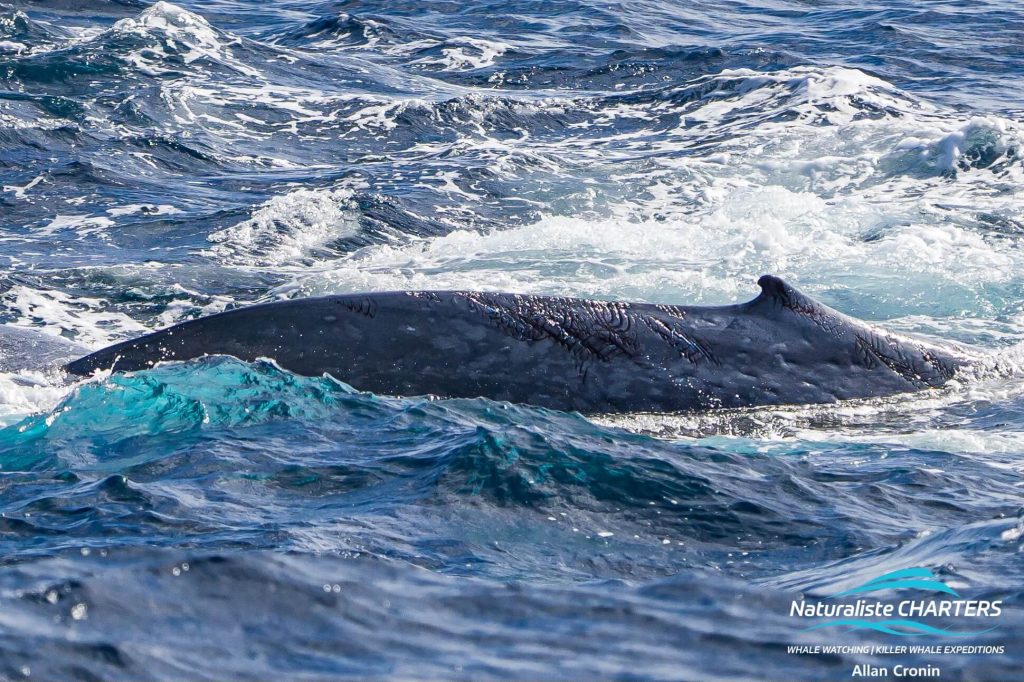
The Kill and Its Aftermath
The entire blue whale predation event unfolded in under 40 minutes. The blue whale’s final moments were both sobering and awe-inspiring. As its body went limp, a bubble of blood surfaced beside the boat. The whale’s mouth emerged, first closed, then pried open — its baleen plates exposed, with an orca emerging from where its tongue had once been.
Albatrosses and flesh-footed shearwaters crowded the surface, competing for scraps. A slick of oil and blood stretched across the ocean as orcas surfaced with chunks of flesh, passing pieces between one another in clear social sharing behaviour — a remarkable but haunting insight into their group dynamics.
But the day wasn’t over yet.
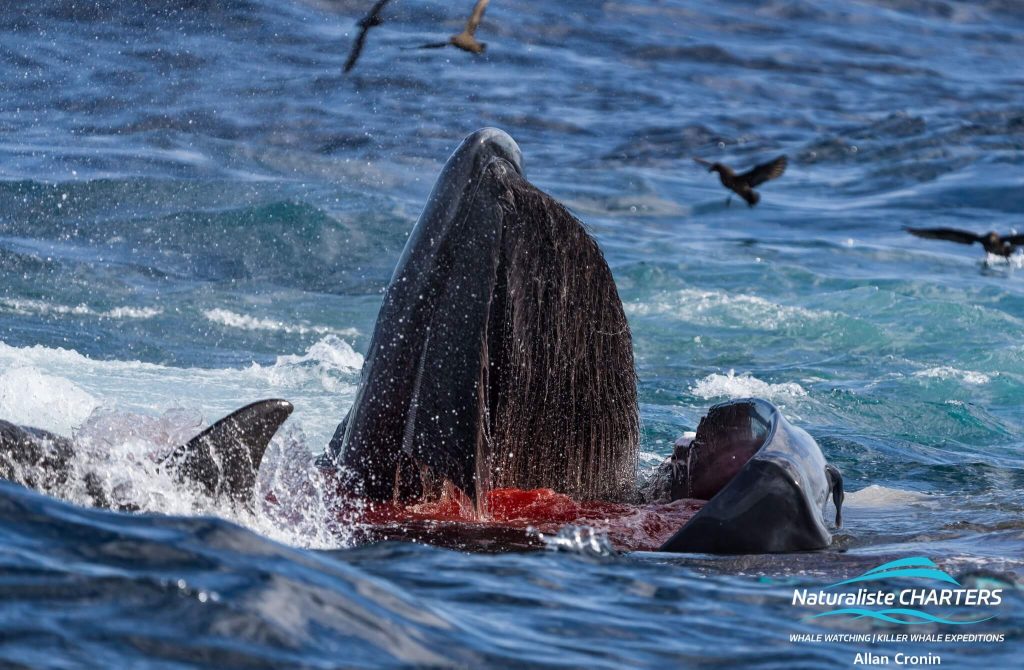
Orcas vs. Pilot Whales: Competing Apex Species
As the feeding frenzy unfolded, more whitewash appeared on the horizon — pilot whales, racing toward the kill. The arrival of this second cetacean species added a new layer of intensity to the encounter. Orcas are typically dominant, yet they often avoid direct confrontation with pilot whales. Today, however, the orcas stood their ground.
Both species surged and scattered, the ocean erupting in powerful, overlapping movements. Eventually, the orcas re-established control of the kill and the tension eased.
We left them to feed in peace, wrapping up the day with a visit to Glasse Island, where Australian sea lions lounged quietly on the rocks — a peaceful end to a truly unforgettable day.
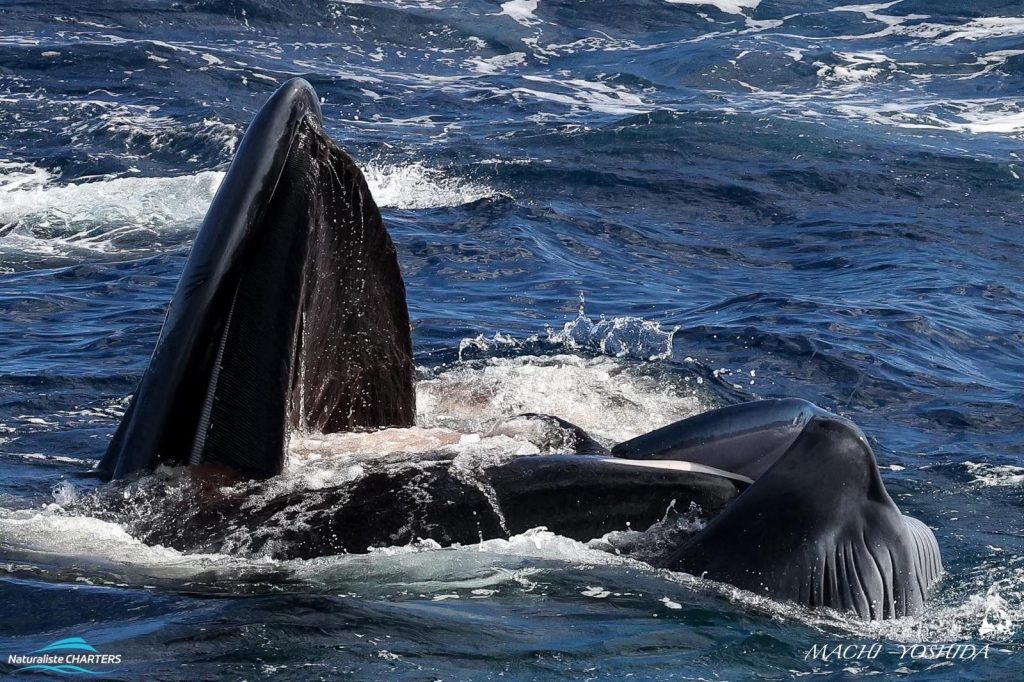
The Rarity and Importance of Orca Predation Events
This marks only the fourth documented case of orcas successfully preying on a blue whale in the Bremer Canyon, with the first recorded in 2019. Globally, such events are incredibly rare, making this encounter scientifically significant.
These moments offer powerful insight into the role of orca predation in marine ecosystems. As apex predators, orcas influence the structure and behaviour of marine life below them through top-down control. Events like this may also influence the long-term population recovery of endangered blue whales in the wake of past commercial whaling.
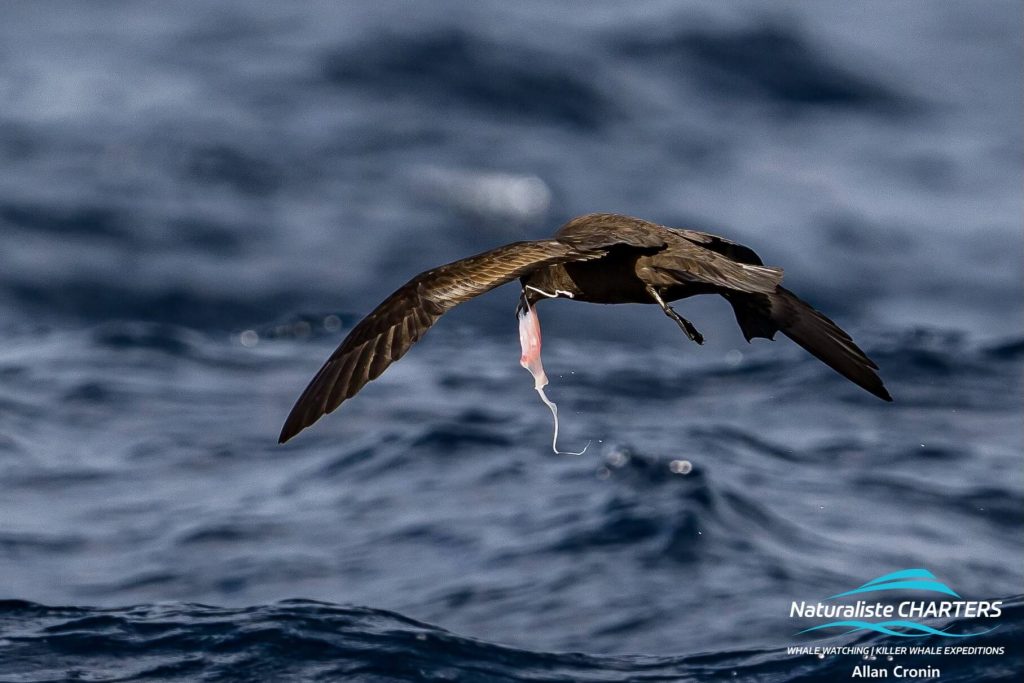
Why Orca Predation Matters for Marine Science
Understanding the dynamics of orca predation helps researchers grasp how ecosystems function and evolve. By observing these rare events firsthand, we gather valuable data on orca hunting strategies, social behaviour, and interspecies interactions.
This encounter highlights the Bremer Canyon as a crucial site for marine research, conservation, and education. For guests and scientists alike, it was a day that delivered both incredible natural spectacle and deeper ecological understanding.
Note: This blog offers an interpretation of the day’s events based on direct observation. Further analysis of images, data, and supporting material may lead to additional conclusions.
📰 Media & Press Enquiries
For further details, expert interviews, or information on licensing images or footage from this encounter, please contact us directly.
📅 Book Your Bremer Canyon Orca Expedition
Join us for your own unforgettable experience with the ocean’s apex predator. Season ends April 21st.


